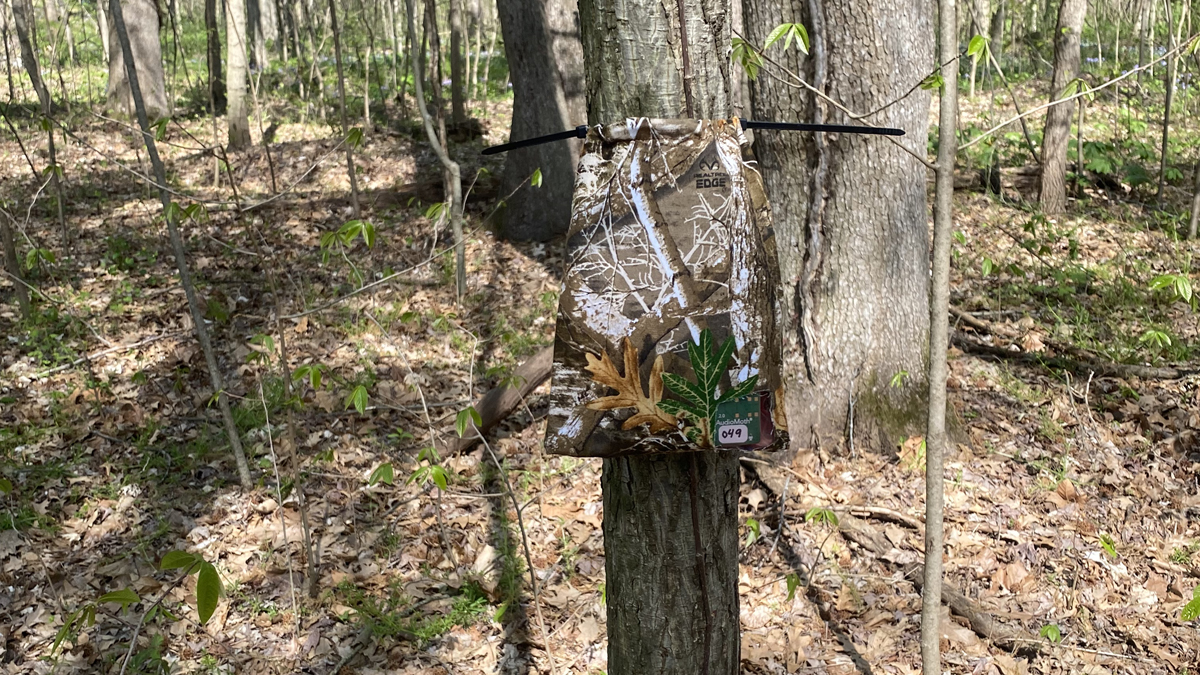
Southern Illinois University Carbondale scientist Brent Pease is asking the public to volunteer to deploy and retrieve sound recorders such as this one for a community research project aimed at understanding changes in biodiversity over time by monitoring so-called “soundscapes,” the collective sounds emanating from a given area. The “Sounds of Nature” program begins May 1 and runs through July 15, and plans call for it to continue annually. (Photo provided)
April 29, 2022
SIU researcher enlists citizen scientists to help track sounds of biodiversity
CARBONDALE, Ill. – A Southern Illinois University Carbondale scientist is asking the public to keep its ears open in the name of monitoring biodiversity.
Starting May 1, Brent Pease, an assistant professor in the forestry program, will kick off Sounds of Nature, a community research project aimed at understanding changes in biodiversity over time by recording and monitoring so-called “soundscapes,” the collective sounds emanating from a given area. The effort runs through July 15 and plans call for it to continue annually.
In the first year of the project, Pease is focusing efforts in Southern Illinois and specifically its southern-most 16 counties. Pease, along with forestry graduate student Elaine Metz and Shasta Corvus, of the School of Forestry & Horticulture, plan to monitor some predetermined areas. But they hope to fill in the gaps with help from citizen scientists.
“Sounds of Nature is unique in that the project works directly with the public to monitor soundscapes on public and private land,” said Pease, who last year directed a similar citizen scientist program called BioBlitz, a 24-hour effort to collect and identify every possible species of plant and animal on campus.
Making the global local
For decades, scientists have been monitoring worldwide biodiversity, which has been falling at unprecedented rates. With the overall stability of the environment at stake, the decline of so many wildlife species is a growing concern for society, Pease said.
Keeping tabs on the situation can be challenging, with so much ground to cover and much of it – more than 85% – private and therefore usually off limits to researchers. Sounds of Nature’s goal is to learn about where regional biodiversity is declining and identify targeted conservation and management actions that can best slow the decline where most needed.
“Studying the collective biodiversity – by listening – is a promising approach to learn about the health of an ecosystem across time and space,” Pease said. “Because we are monitoring the entire soundscape, we can learn about a number of animals – birds, amphibians and even mammals – across the unique places in Illinois. Places like forests, developed areas, agricultural landscapes and even riparian areas such as river banks and wetlands.”
Citizens as scientists
Many everyday people share concerns for the environment, and projects such as Sounds of Nature and BioBlitz, which use citizen science, are important ways for the public to positively contribute to its protection. Citizen science is the process of engaging and involving the general public in scientific research, Pease said, and its participation can make a big difference.
Without community support, he said, scientists will miss an essential piece of the biodiversity puzzle.
“The people who live in the region are particularly proud of the natural resources in Illinois and may be concerned about the loss of wildlife and special places, but are unsure how they can help,” Pease said. “This project directly involves the public in the scientific process. We work with landowners all across the region who volunteer to run our sound recorders on their properties.”
Easy to help
Most citizen science projects require no special training of the volunteers, just an interest and a willingness to help, Pease said. In this case, it takes just a few minutes to deploy and retrieve a sound recorder.
The sampling period runs May 1-July 15, with each volunteer sampling for five or six days within that time period. After the recording is finished, volunteers are asked to retrieve and return the device to the researchers.
Participation is open to everyone, with no age, background or experience required. The sound recorders the researchers are using do require volunteers to use their smartphones to set up, but no other equipment is needed.
“If you’re concerned about the environment and biodiversity, this is an important opportunity to help scientists learn more and better protect it for everyone,” Pease said.
To learn more about volunteering for Sounds of Nature, visit the project’s application portal. Questions may be directed to Pease at bpease1@siu.edu or 618-453-7474.
